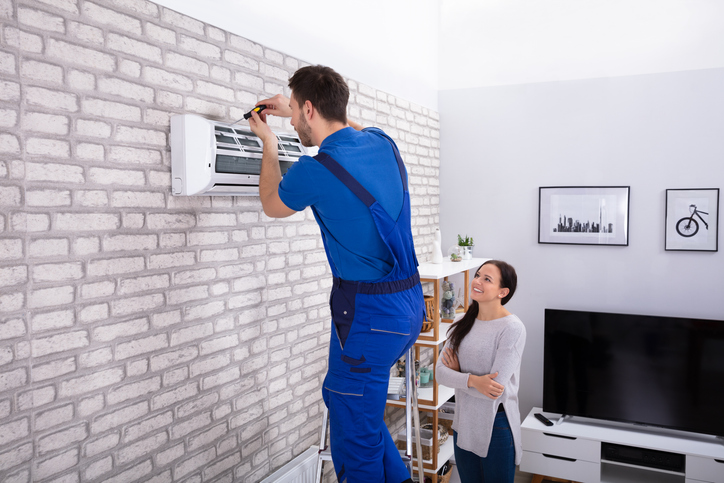Introduction
Installing a new air conditioning system is a major investment that greatly impacts your home’s comfort, energy efficiency, and utility costs. Along with the initial purchase price and AC installation fees, it’s crucial to consider the warranties that come with your new AC system. These warranties serve as a safety net, protecting you against unexpected repair costs, defective parts, and faulty installation. However, many homeowners overlook or misunderstand the terms of their warranties, leading to confusion or denied claims when issues arise. Warranties differ significantly between manufacturers and contractors, and knowing what each covers, their limitations, and how to maintain your warranty validity can save you money and headaches down the line. This article offers a detailed guide on the types of AC warranties, their coverage, common exclusions, maintenance requirements, and practical advice on handling warranty claims effectively. Being well-informed empowers you to make confident decisions and protect your AC investment.
What to Know About AC Installation Warranties
1. Types of AC Warranties: Manufacturer vs. Contractor
When you purchase and install a new air conditioner, you typically receive two main types of warranties: the manufacturer’s warranty and the contractor’s warranty. The manufacturer’s warranty covers the physical components of the AC unit—such as compressors, evaporator coils, and fans—and protects against defects in materials or workmanship. These warranties usually last between 5 to 10 years, depending on the brand and model. Some manufacturers even offer limited lifetime warranties on key parts for higher-end units.
On the other hand, the contractor’s warranty covers the quality of the installation work performed by the HVAC company. This warranty protects against installation errors that can cause refrigerant leaks, electrical problems, or improper system setup. Unlike manufacturer warranties, contractor warranties tend to be shorter, often lasting from 1 to 2 years, but are equally important because poor installation can drastically reduce system efficiency and longevity.
Both warranties work together to cover different aspects of your AC system, and understanding the distinction helps you know where to turn for specific issues.
2. Coverage Details and Common Exclusions
Understanding what your warranties cover—and more importantly, what they exclude—is critical to avoid surprises. Manufacturer warranties typically cover replacement parts if defects are found, but often exclude labor costs for repairs. This means while you might get the part for free, you could still pay for the technician’s time and travel. Some components, such as air filters and fuses, are generally not covered.
Exclusions commonly include damage resulting from improper AC maintenance, misuse, unauthorized AC repairs, or external factors like power surges or natural disasters. For example, if you fail to clean or replace filters regularly, your warranty might become void.
Contractor warranties primarily cover labor related to the installation process. They usually do not cover parts unless a failure directly results from installation errors. However, if your contractor botched the refrigerant charge or electrical wiring, their warranty should cover the repair costs.
It’s vital to carefully read the warranty documentation to understand these terms, as each manufacturer and contractor may have different policies.
3. Extended and Enhanced Warranty Options
Many HVAC manufacturers and contractors offer extended or enhanced warranty plans for homeowners wanting additional peace of mind beyond the standard coverage. Extended warranties typically add several years of coverage for parts and sometimes labor, protecting you from costly repairs later in your AC’s life.
Enhanced warranty plans often include perks like annual professional tune-ups, priority scheduling for repairs, and coverage for wear-and-tear items that standard warranties exclude. These add-ons come at an extra cost but can be valuable if you prefer predictable maintenance expenses.
Before purchasing an extended warranty, weigh the upfront costs against the likelihood and expense of future repairs. Also, read the terms carefully to ensure you know exactly what the extended coverage includes.
4. The Importance of Proper Maintenance for Warranty Validity
Most AC warranties require regular professional maintenance to remain valid. This typically means scheduling annual inspections and tune-ups with a licensed HVAC technician who will clean coils, check refrigerant levels, inspect electrical connections, and ensure the system operates efficiently.
Neglecting routine maintenance can void your warranty, leaving you responsible for repair costs that might have otherwise been covered. Keeping detailed maintenance records and receipts is essential when filing warranty claims, as manufacturers and contractors often require proof that you followed their maintenance guidelines.
Beyond protecting your warranty, proper maintenance extends the life of your AC unit, improves performance, and can reduce energy costs by keeping your system running smoothly.
5. How to Handle Warranty Claims Effectively
If your air conditioner experiences issues covered under warranty, following the right steps can help ensure a smooth claims process. First, contact the HVAC contractor who installed your system. Most contractors coordinate warranty repairs with the manufacturer and can dispatch a qualified technician promptly.
Have all documentation ready, including your purchase invoice, warranty certificates, and maintenance records. Be clear and specific about the problem, providing any error codes or symptoms you’ve noticed.
Keep records of all communications, appointments, and repair work performed. If you encounter delays or claim denials, escalate the issue by contacting the manufacturer’s customer service or your local consumer protection agency for assistance.
By staying organized and proactive, you can protect your rights and get your AC repaired with minimal hassle.
Warranties are a critical part of any new AC installation, offering financial protection and peace of mind against defects and installation issues. Manufacturer and contractor warranties provide complementary coverage that together safeguard your investment. Understanding warranty terms, coverage limits, and exclusions helps prevent surprises and ensures you know your responsibilities, especially regarding regular maintenance. Extended warranty plans offer additional security but require careful consideration. When it’s time to make a claim, being organized and communicating speeds up repairs. Investing time to learn about your AC warranties empowers you to enjoy reliable, efficient cooling for years while avoiding unexpected repair costs.
Conclusion
Secure your home with professional AC Installation from Supreme Service Today. Connect with our professionals at (410) 788-1114 for expert AC service, clear warranty options, and trusted support on every new system installed.
📌Trusted experts near you! Stop by our Supreme Services Center for reliable plumbing, Heating, and HVAC solutions — fast, friendly, and local.





